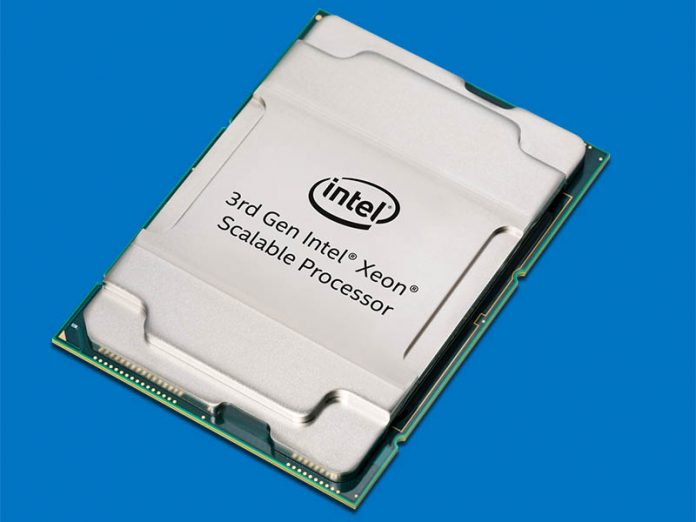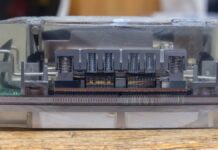With every CPU generation, we cover we have a SKU list and value analysis piece. Now that the third-generation Intel Xeon Scalable CPUs, codenamed “Cooper Lake”, is released, we wanted to share this analysis with our readers. The Cooper Lake Xeon platform one can think of as re-separating out the Xeon line into high socket count parts from mainstream processor lines. While the two segments were combined in the first and second-generation Xeon Scalable lines, Intel previously had Xeon E5 mainstream lines and the Xeon E7 brand for higher socket count lines. As a result, one can think of this as returning to the old segmentation. For our readers, we still wanted to do the SKU list and value analysis that we would normally do on a new set of CPUs.
Editor’s Note: This article was updated on 2021-02-24 with the four additional public SKUs added to the series. To maintain the sanctity of the article, we are only going to change the tables, not the text.
Reading a 3rd Gen Intel Xeon Scalable Cooper Lake Model Number
We wanted to take a moment and discuss what the model numbers mean. Specifically, we will use the Intel Xeon Platinum 8380HL as our example SKU. With the 8380HL we get:
- 8 – this tells us we have a “Platinum” level SKU
- 3 – 3rd Generation Intel Xeon Scalable
- 80 – The model designation
- H – Cooper Lake/ Cedar Island platform
- L – High Memory Enabled SKU for 4.5TB/ socket support*
To most who are familiar with the Xeon Scalable stack, this should make sense. The two changes from the Second Generation Intel Xeon Scalable is that the generation number is updated to 3rd Gen Xeon Scalable and the H was added for the platform. The H is important since we will have Ice Lake Xeons later in the year. Intel is using the H to avoid confusion.
You will note we put an asterisk next to memory support. Technically, each CPU supports up to 256GB DDR4 DIMMs and twelve DIMMs per CPU. One would correctly find this is 256GB x 12 = 3TB of DDR4 supported. The way one could get to 4.5TB is by using 256GB DDR4 * 6 + 512GB Optane PMem 200 per socket. That would give 4.5TB.
As we noted in the original 3rd Generation Intel Xeon Scalable Cooper Lake piece, this is a different type of support than is found in 2nd Gen Xeon Scalable. With the 2nd Gen Intel Xeon Scalable M SKUs Discontinued, one has the option to use “L” SKUs with 4.5TB memory support as well. The difference is that with the older generation, one can use “Memory Mode” to see larger memory footprints in the OS. With the Cooper Lake generation, one only gets App Direct mode. For many applications written to utilize App Direct, such as SAP HANA, this is very impactful. For some who just want to run a basic virtualization node using high-capacity Optane PMem for a larger memory pool, you likely want to use Memory Mode.
In the launch materials, Intel noted Optane PMem 200 supports Memory Mode. Since that is not available in Cooper Lake, we know that Memory Mode will be a feature making its return with Ice Lake Xeons later in 2020.
Now that we have the background done, we are going to get to the SKUs.
3rd Gen Intel Xeon Scalable Cooper Lake SKU List
Here is the basic 3rd Gen Intel Xeon Scalable Cooper Lake SKU list:

This list seems small with only 11 SKUs. We expect Intel to introduce three new SKUs covering some of the gaps in the line over the next few months. Still, this is what we have today.
There are no Xeon Silver SKUs which makes sense. Although Cooper Lake works in single and dual-socket configurations, such as those we covered in Facebook Introduces Next-Gen Cooper Lake Intel Xeon Platforms, the primary focus is on 4-socket and 8-socket capable markets.
Something that was really interesting with the new SKUs is the very conservative TDPs. We reviewed the Intel Xeon Platinum 8253 and the next-generation Platinum 8353H has a 150W TDP. For a new platform, with higher-end sockets that are designed for 250W operation, we would imagine the new Xeon Platinum 8354H with higher TDP and higher frequencies would be better for many buyers. For some reference, the Platinum 8253 is a $3115 list price part. Intel is doing some nuanced segmentation here.
3rd Gen Intel Xeon Scalable Cooper Lake Value Analysis
In our value analysis, let us first take a look at the cost per core.

We can see that our cost per core goes up quite a bit. The Platinum 8376H has a 205W TDP and 28 cores, but actually a 100MHz lower base clock/ 300MHz higher turbo clock versus the Xeon Gold 6258R, at $8719 v $3950. That price premium is primarily for 4-socket/ 8-socket operation which is why we are unlikely to see these SKUs in as many 2-socket platforms. The Big 2nd Gen Intel Xeon Scalable Refresh changed the value proposition such that the majority of the market will look to those SKUs for dual-socket servers.
When we bring the clock speed element into the chart, we see Intel’s pricing strategy more clearly:

The Intel Xeon Gold 6348H has a solid 16 core value, but then adding the “L” makes it look like a poorer value on strictly a dollar per core clock basis. That is because the “L” means it is a high-memory SKU. If you want a 16-core App Direct Optane PMem 200 platform, this is what you will buy and the approximately $3000 premium for the high memory SKU will seem minor compared to the cost of the memory.
That is similar for the two other L SKUs, but the difference with the Xeon Gold 6328HL is that the high-memory premium is close to twice the list price of the base SKU. In the Xeon Platinum range, it is a smaller percentage premium.
For some context, Intel’s pricing strategy here is in-line with the original 2nd Generation Intel Xeon Scalable launch pricing. This makes sense since these SKUs are largely an update to the 4P/ 8P roles that were not touched in the Refresh.
Final Words
When the 2nd Generation Intel Xeon Scalable Refresh happened earlier in 2020, Intel clearly positioned a new value proposition for its mainstream single and dual-socket parts. The reason behind this was clear. The company also announced Intel Cooper Lake plans were rationalized focusing the parts on 4-socket and 8-socket markets above the 2nd Generation Refresh.
Where this segmentation may look different is later this year with Ice Lake Xeons hitting the market. With an updated microarchitecture, new platform features such as more memory and more PCIe (Gen 4 as well), there is going to be a lot of pressure on the Cooper Lake platform. We currently expect the “L” series premium to dissipate with the Ice Lake Xeon generation. We expect a lot of pressure on the lower-end of the Cooper Lake stack as there are many organizations that will be able to match workloads to dual socket Ice Lake platforms instead of quad-socket Cooper Lake.





Maybe this is a silly question, but whatever happened to the 60-watt low power SKUs? I loved my Xeon L5640s and it’s kind of sad that that whole market segment seems to have evaporated.
https://www.servethehome.com/intel-xeon-l5640-60w-dual-core-processor-benchmarks-review-power/
This is a different segment than those low power 60W TDP SKUs.
Realistically, the 60W segment has moved to single-socket SKUs.
Also, the Xeon L5640’s were 60W but the single/ dual IOH on that platform used a lot of power as well.
interesting comment Nick regarding low power server CPUs. Part of me wonders if ICE LAKE-D will fill this niche down the road.